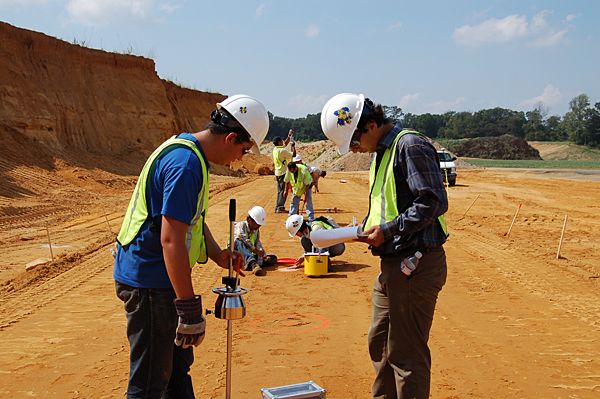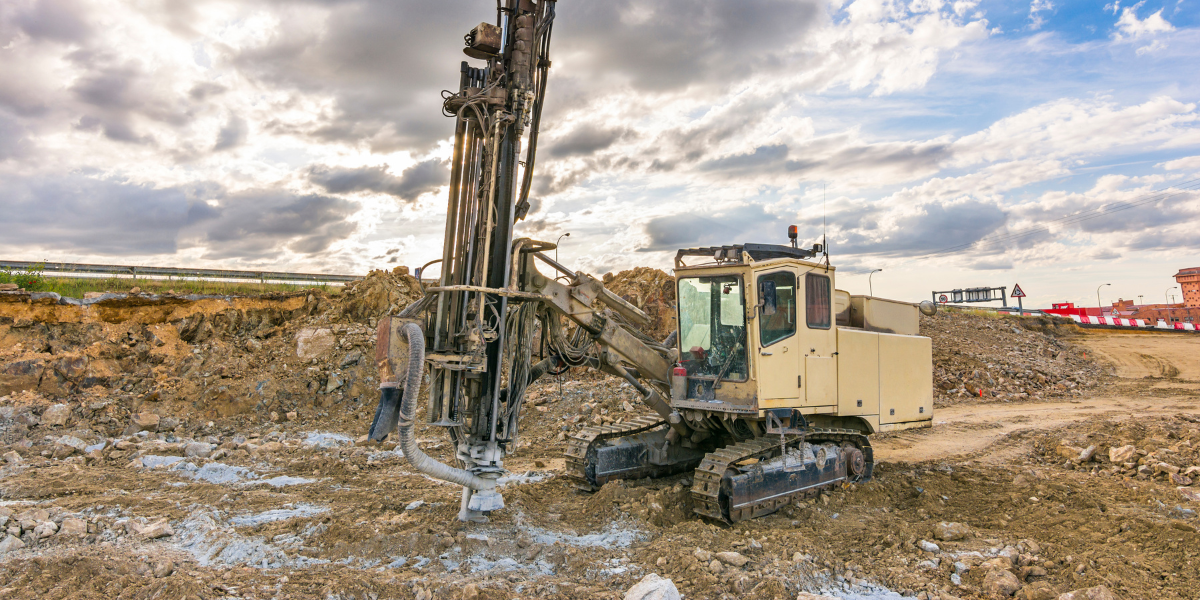Specialized Geotechnical Works for Sustainable Construction Solutions
Specialized Geotechnical Works for Sustainable Construction Solutions
Blog Article
Just How Consulting Engineers Enhance Geotechnical Design Projects: Insights Into Their Experience, Techniques, and Collaborative Approaches
Consulting designers are essential in improving geotechnical engineering jobs, applying their specialized understanding to navigate the intricacies of subsurface problems. Their joint approaches foster communication among varied job stakeholders, eventually shaping the task's trajectory.
Duty of Consulting Engineers
The proficiency of speaking with designers in geotechnical engineering is essential to the successful execution of building jobs. These professionals play a critical function in evaluating soil and rock buildings, which are important variables affecting design and construction choices. By performing extensive website examinations, seeking advice from designers accumulate crucial data that informs the style process, ensuring projects are improved stable and suitable ground.
Consulting engineers also provide indispensable insights into risk management (geotechnical geologist). They identify potential geotechnical hazards, such as landslides, soil liquefaction, and negotiation concerns, making it possible for stakeholders to implement effective mitigation strategies. Their experience help in optimizing foundation designs, which can result in considerable price savings and improved safety and security
Additionally, consulting engineers work as an important link in between job owners, designers, and service providers. Their capability to equate complicated geotechnical data right into workable suggestions fosters collaboration and helps with educated decision-making throughout the task lifecycle. This multidisciplinary strategy not just enhances project efficiency yet additionally makes certain conformity with governing criteria and finest techniques.
Trick Methodologies in Geotechnical Engineering

One key methodology is website investigation, which includes conducting field examinations and laboratory evaluations to collect information on subsurface problems. Methods such as Criterion Penetration Screening (SPT) and Cone Penetration Testing (CPT) are commonly used to review soil stratigraphy and strength. In addition, geophysical methods, including seismic and electric resistivity studies, supply non-invasive means to evaluate subsurface features.
One more essential methodology is numerical modeling, which allows engineers to imitate numerous situations and predict exactly how soil-structure communications will behave under different loading conditions. Limited Component Evaluation (FEA) is a common strategy used in this context.
Additionally, the design of structures, keeping structures, and earthworks counts heavily on these approaches - geotechnical geologist. By integrating advanced logical devices with field data, seeking advice from engineers can create tailored solutions that resolve specific project challenges, ultimately adding to the stability and security of construction jobs
Value of Soil Analysis
Soil analysis functions as a fundamental element in geotechnical design, giving crucial understandings into the physical and chemical residential properties of soil essential for blog here efficient construction preparation. Comprehending soil features is crucial for establishing its load-bearing capacity, water drainage actions, and capacity for settlement or instability. Detailed dirt examinations, including sampling and lab testing, aid identify specifications such as dirt type, moisture material, thickness, and shear strength.
These analyses notify the option of suitable building and construction strategies and materials, eventually affecting project security and longevity. Cohesive dirts might call for different foundation styles compared to granular soils, necessitating customized engineering options. In addition, soil analysis help in determining contaminants that could posture dangers to human wellness or the atmosphere, permitting the advancement of reduction approaches.
Including soil analysis right into the early stages of project advancement helps to decrease unforeseen obstacles, making certain that designers can anticipate and deal with potential concerns before they escalate. By establishing a comprehensive understanding of the website problems, seeking advice from designers can optimize style performance and reduce costs, thereby boosting the general success of geotechnical design jobs.
Collaborative Techniques in Jobs
Successful geotechnical tasks usually rest on collective approaches that unite diverse knowledge from different techniques. Reliable collaboration amongst speaking with designers, rock hounds, ecological scientists, and building professionals is critical for attending to complex obstacles and maximizing job outcomes. By leveraging the special skills and understanding of each group member, tasks can take advantage of an all natural understanding of the site conditions, regulative requirements, and engineering restraints.
Regular interaction and interdisciplinary conferences facilitate the sharing of understandings and cultivate a culture of team effort. These image source joint efforts allow the recognition of prospective threats early in the job lifecycle, permitting prompt reduction strategies. Integrating responses from stakeholders, consisting of local communities and regulative agencies, ensures that all point of views are thought about, boosting project approval and compliance.
Furthermore, the combination of innovative modern technologies, such as Geographic Details Equipment (GIS) and Building Info Modeling (BIM), additional improves partnership. These tools permit the real-time sharing of information and visualization of geotechnical conditions, promoting notified decision-making. Eventually, a collective method not just enhances job execution yet additionally lays the foundation for ingenious services to complex geotechnical design obstacles.
Impact on Project Outcomes

Consulting designers use sophisticated methodologies such as threat assessment and anticipating modeling, which enhance the precision of project projections. Their capacity to integrate ingenious technologies, like geotechnical instrumentation and data analytics, better fine-tunes the layout and building procedures. Consequently, projects experience improved performance, decreased expenses, and minimized delays.
In addition, fostering efficient communication and partnership amongst staff member improves analytic capabilities. When challenges emerge, a joined front enables swift identification of options, preventing prospective obstacles. Inevitably, the collaborative initiatives of speaking with engineers add to greater top quality outcomes, guaranteeing that projects meet both regulatory standards and client expectations.
Conclusion

Report this page